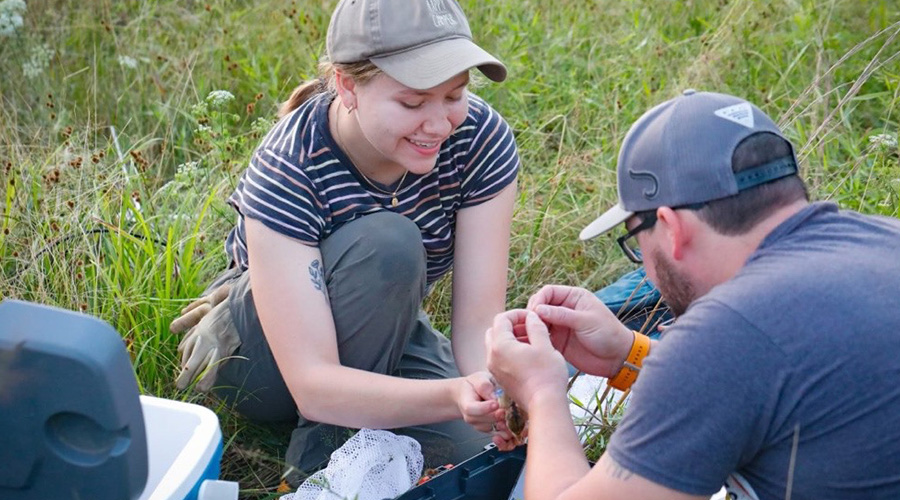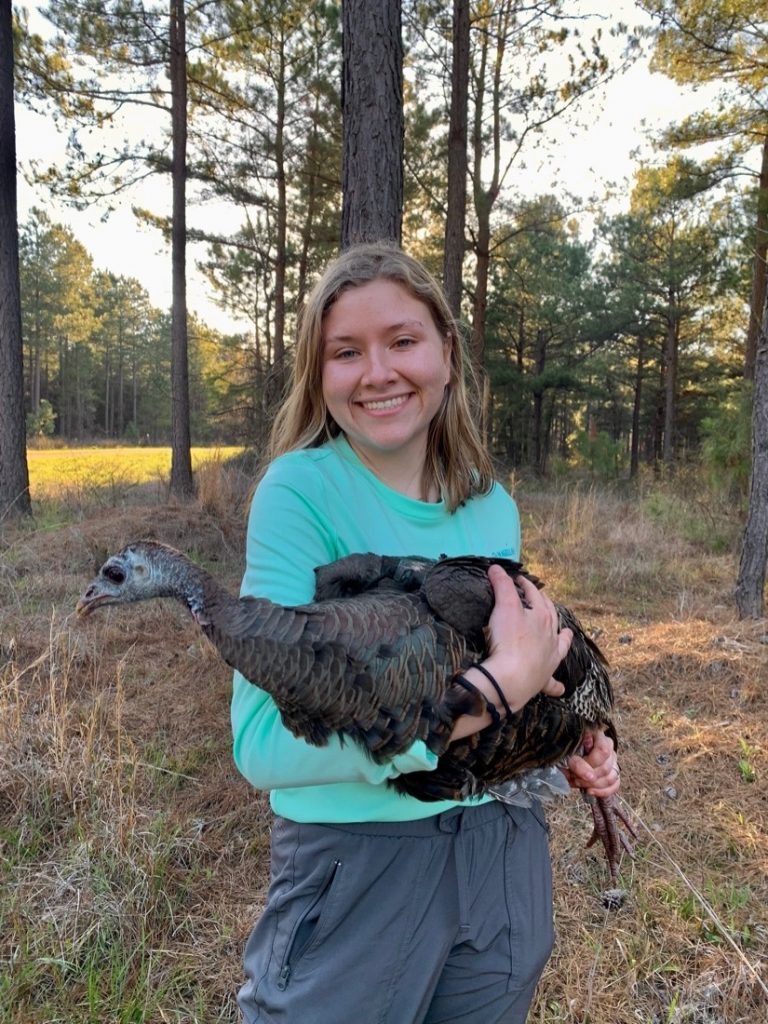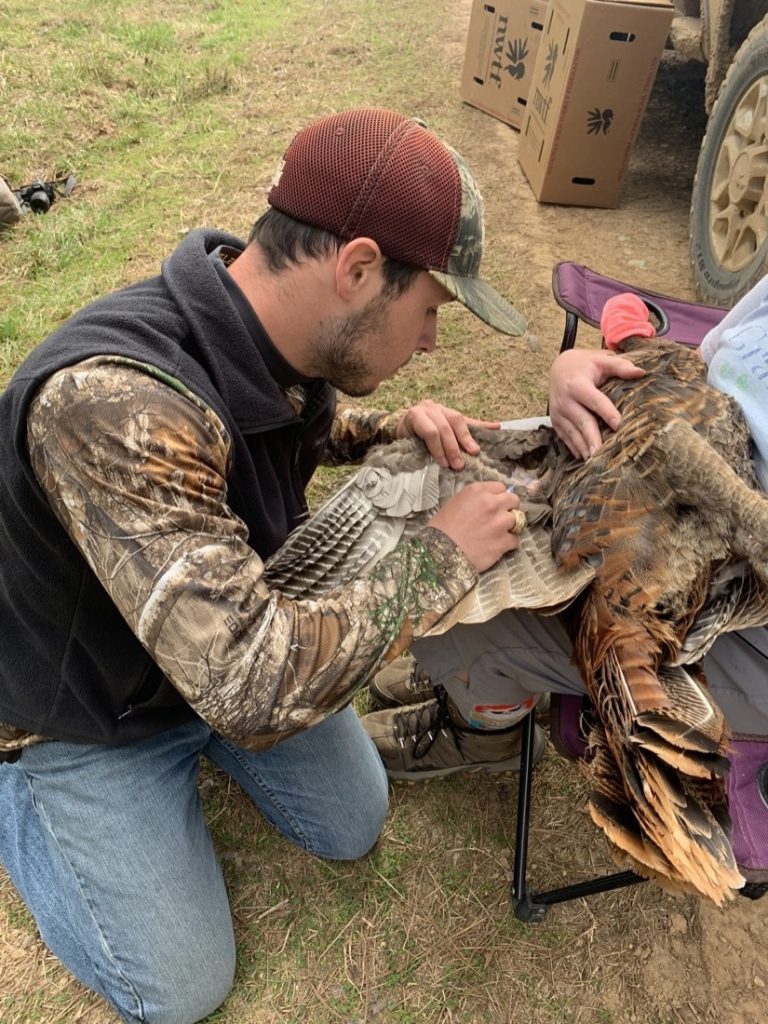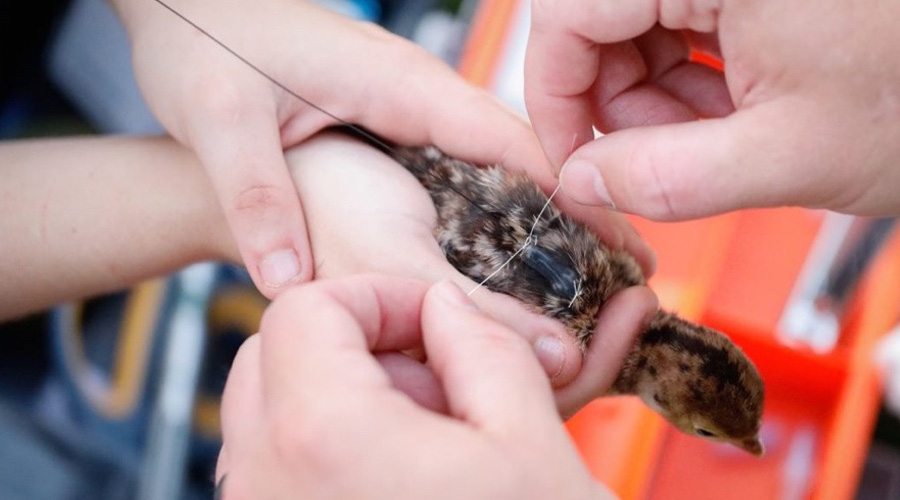Wild Turkey Research One Year Closer to Addressing Declines
For the second year, the NWTF Oklahoma State Chapter is supporting a five-year wild turkey research project conducted by Oklahoma State University and the Oklahoma Department of Wildlife Conservation.

Turkeys were nearly eliminated from most of Oklahoma by the late 1930s. Like many states, successful trap and transplant programs conducted by the Oklahoma Department of Wildlife Conservation, NWTF and other partners resulted in a huntable population, which is included in all 77 counties in the state.
Despite the remarkable comeback of our favorite game bird in Oklahoma, poult production is down, indicating a lower-than-sustainable brood survival.
Brood survivals are an essential indicator of a balanced and sustainable wild turkey population. ODWC states that a poult-per-hen ratio of less than two illustrates a declining population.
An ongoing wild turkey research project is taking a comprehensive approach to understanding the decline and brood survival on a deeper level.
“Given differences in land-use practices, land cover and climate within the distributions of the two subspecies in the state, other factors may be playing a role in low recruitment,” said Colter Chitwood, Ph.D., assistant professor of natural resource ecology and management at Oklahoma State University. “Loss of genetic diversity and isolation of some populations could contribute to population declines, and our understanding of population genetics for turkeys in Oklahoma is limited.”
The lack of information on wild turkey demographics and population genetics of turkeys in the Sooner State limits the ability of ODWC wildlife managers to manage the state’s turkey population to full its potential.
“This information is vital for areas of high conservation concern in southeastern [Eastern subspecies] and southwestern [Rio Grande subspecies] Oklahoma,” Chitwood said. “Specifically, an understanding of the cause-specific failure of nests and mortality of poults and hens is needed to guide decision-making that might facilitate improved turkey recruitment.”
Chitwood’s research will gain information on the contributing factors of low brood survival and recruitment, ultimately aiding managers in making habitat management decisions to increase wild turkey production and survival.
Over five years (the project is in its second year), Eastern wild turkeys will be captured via rocket nets, and Rio Grande wild turkeys will be captured via walk-in and drop-net traps during late winter and early spring, before spring turkey hunting season. Trap sites will be pre-baited in December and January with corn and milo that is USDA-certified aflatoxin free.

Once the birds are trapped, Chitwood and his team will keep them calm by covering their heads and putting them in a cardboard transport box. One by one, the research team will run various tests and collect numerous samples, including blood and cloacal swabs for disease testing. A uniquely numbered riveted leg band will also be attached to the right leg of each captured turkey and include a phone number to report recovered bands.

However, the essential information for the research project will come from data collected from transmitters that will be attached to some of the birds.
“Female wild turkeys will have a backpack-style GPS-VHF transmitter attached to them,” Chitwood said. “We will immediately release turkeys at the location of capture. We are working to maintain a minimum of 30 to 40 monitored female wild turkeys per site each breeding season.”
Signals from the hens provide crucial information to Chitwood and his team. For instance, once a hen remains in a localized area for three days during the breeding season, it is determined as a potential nest site.
“If a hen is found to be off the nest, then the nest contents will be checked, eggs counted and a location recorded with a GPS,” he said. “Once a hen has hatched or failed, determined by the presence of eggs or egg fragments, the contents will be collected for genetic analysis. The number of hatched, failed or depredated eggs will be recorded for each nest.”
Moreover, the team will monitor the offspring’s survival by attaching much smaller backpacks to the poults.

“Within two days of successful hatches, we will locate the brooding hen at sunrise and flush her from the brood,” Chitwood said. “We will search the entire area both visually and with a handheld FLIR (forward-looking infrared technology) and capture each poult. We will attempt to capture all poults as estimated from the number of successfully hatched eggs. We will attach a very small, suture-style transmitter with an expected battery life of 60 days to the back of the poult.”
Once all poults have transmitters, the entire brood will be placed on the ground adjacent to the capture point in dense cover. The researchers will leave the area to allow the hen to relocate and brood the poults. At least three times per week, each brooding hen will be located using VHF.
“Once located, we will scan all poult frequencies to determine the presence,” Chitwood said. “Present poults will be assumed alive, and missing poults will be searched for between the hen’s last locations to determine fate.”
The project has five key objectives:
- Evaluate nesting ecology.
- Evaluate brood ecology.
- Determine seasonal movement and habitat selection.
- Determine hen and poult survival.
- Provide best management practices for wild turkey management to ODWC.
“Population declines are a serious problem, and the reasons cannot be oversimplified,” said Annie Farrell, NWTF district biologist for Texas, Oklahoma, Nebraska and Kansas. “The NWTF is proud to lend our support to Dr. Chitwood and his team, OSU and ODWC to ensure the sustainability of our beloved bird in Oklahoma.”
CONNECT WITH US
National Wild Turkey Federation
770 Augusta Road, Edgefield, SC 29824
(800) 843-6983
National Wild Turkey Federation. All rights reserved.
